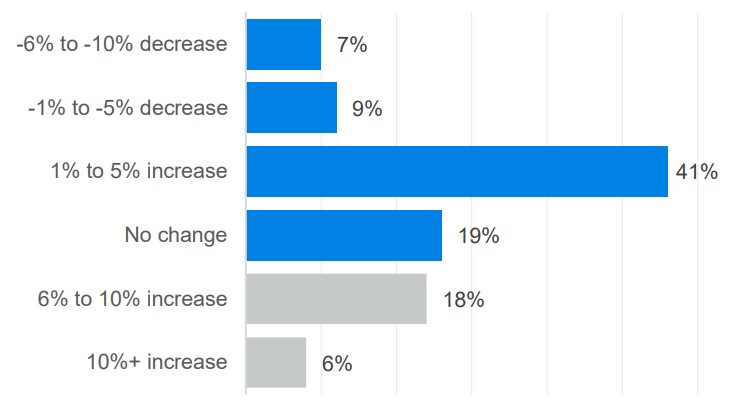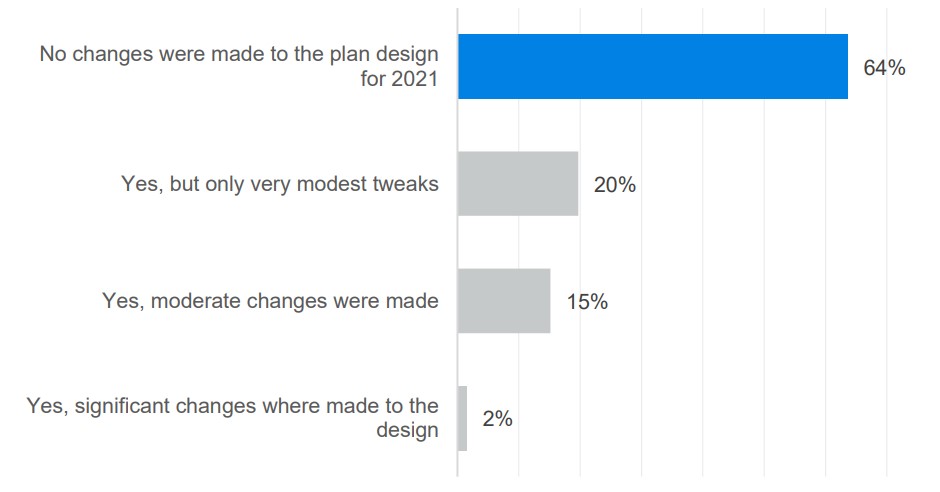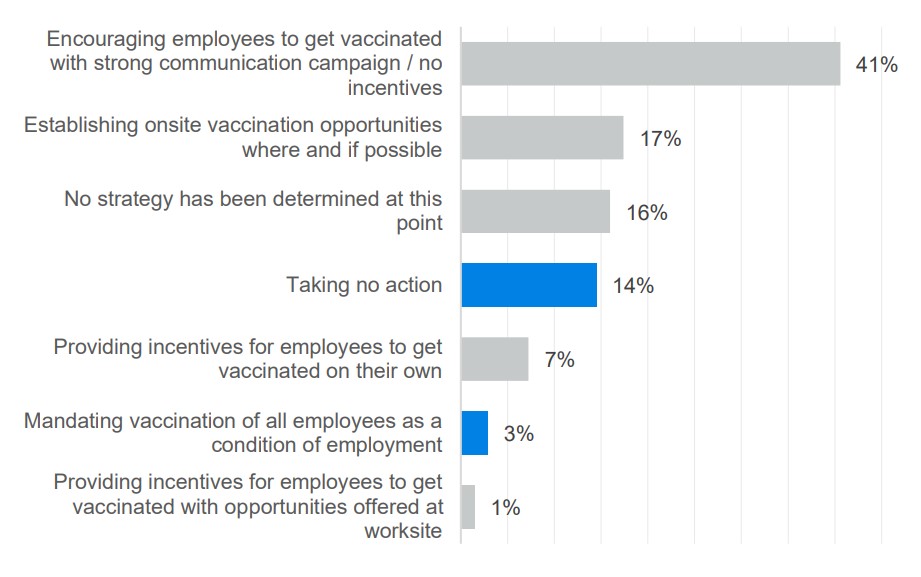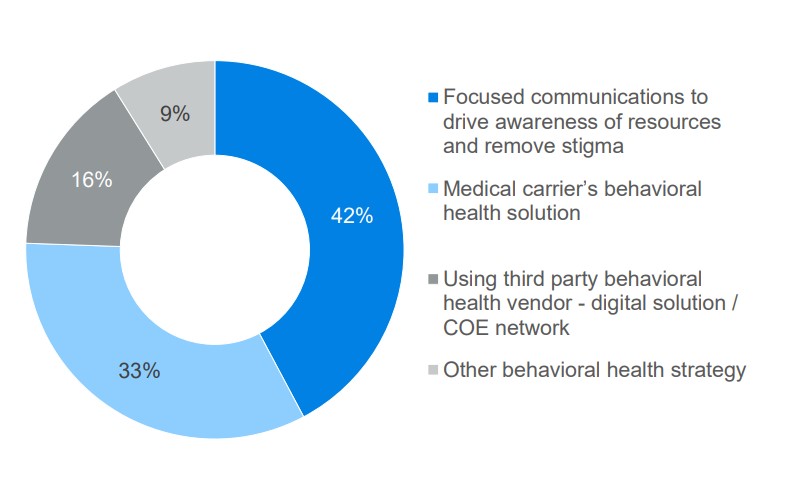Throughout the year, Milliman conducts regular Pulse Surveys focused on benefits topics that employers find meaningful and strategically informative. For this survey, we looked at how employers and plan sponsors are addressing plan design, cost management, compliance, and employee engagement in the all-too-familiar global pandemic. What are the top priorities and how should we expect COVID-19 to impact benefits programs during the remaining months of 2021 and into 2022?
Perhaps not surprisingly, the top priorities for employers in this survey focused on the health and safety of the workforce in the midst of the COVID-19 global pandemic. Half of respondents listed return-to-work workplace safety as the number one priority, followed closely by a focus on developing and communicating a vaccine strategy. Rounding out the top priorities was an increased focus on supporting emotional well-being (mental health) and staying up to speed on ever-changing legislative compliance issues.
Survey summary
RETURN TO THE OFFICE
DEFERRED CARE
Although the deferred and forgone care experienced primarily in the first half of 2020 benefited the early months of last year’s budgets, it was a serious concern for most in terms of setting budgets for 2021. At the time of budget-setting for this plan year, employers had very little data available and too many unknown variables to factor into the equation. Predicting the impact of how and when this deferred care would rebound, as well as predicting the future impact of forgone care, was a challenge. The survey suggests that most employers felt a large amount of deferred care would rebound still within 2020 and have less impact on overall cost trends for 2021.

PLAN DESIGN AND ENROLLMENT CHANGES
This all suggests that despite layoffs and furloughs imposed last year by many employers, and possible employee concerns with their individual levels of health coverage as a result of COVID-19, adverse selection has not been a factor and the employer’s overall health risk has not changed.

VACCINE STRATEGY
Vaccine strategy drew a wide range of responses. Most are not offering incentives but are driving hard communication campaigns to encourage employees to get vaccinated on their own when it becomes available. The continuing challenge for employers remains dose availability, as well as helping those “in the middle” who are still wavering on whether or not to get the vaccine (at the workplace or elsewhere). Most of the communication strategies are focused on helping employees feel confident in the safety of these vaccines, and on helping employees find external resources in terms of receiving the vaccine.

MENTAL HEALTH
Mental health continues to be a priority for employers with concerns over COVID-19’s impact on how employment security, fear of contracting the disease, and social isolation have negatively impacted emotional well-being for many in the workforce. Improving access to mental health providers as well as removing the stigma are challenges for all employers. This survey suggests that most are ramping up focused communication campaigns to draw more attention to available employer resources. Despite the growing proliferation of boutique mental health digital solutions emerging in the market, less than 10% of respondents contract with a third-party vendor in this category.

SECTION 125: MIDYEAR ENROLLMENT OPTIONS
In one of the more prominent pieces of regulatory actions announced last spring as a result of COVID-19, the Internal Revenue Service (IRS) allowed employers to offer midyear enrollments for medical and flexible spending accounts (FSAs)—as well as allowed changes to their Section 125 documents, creating broader FSA carryover provisions. Each was considered employer discretion. As noted, very few employers took advantage of the medical midyear enrollment opportunity but nearly half of those surveyed opened up FSA enrollment, allowing employees to realign their FSA-related deductions.